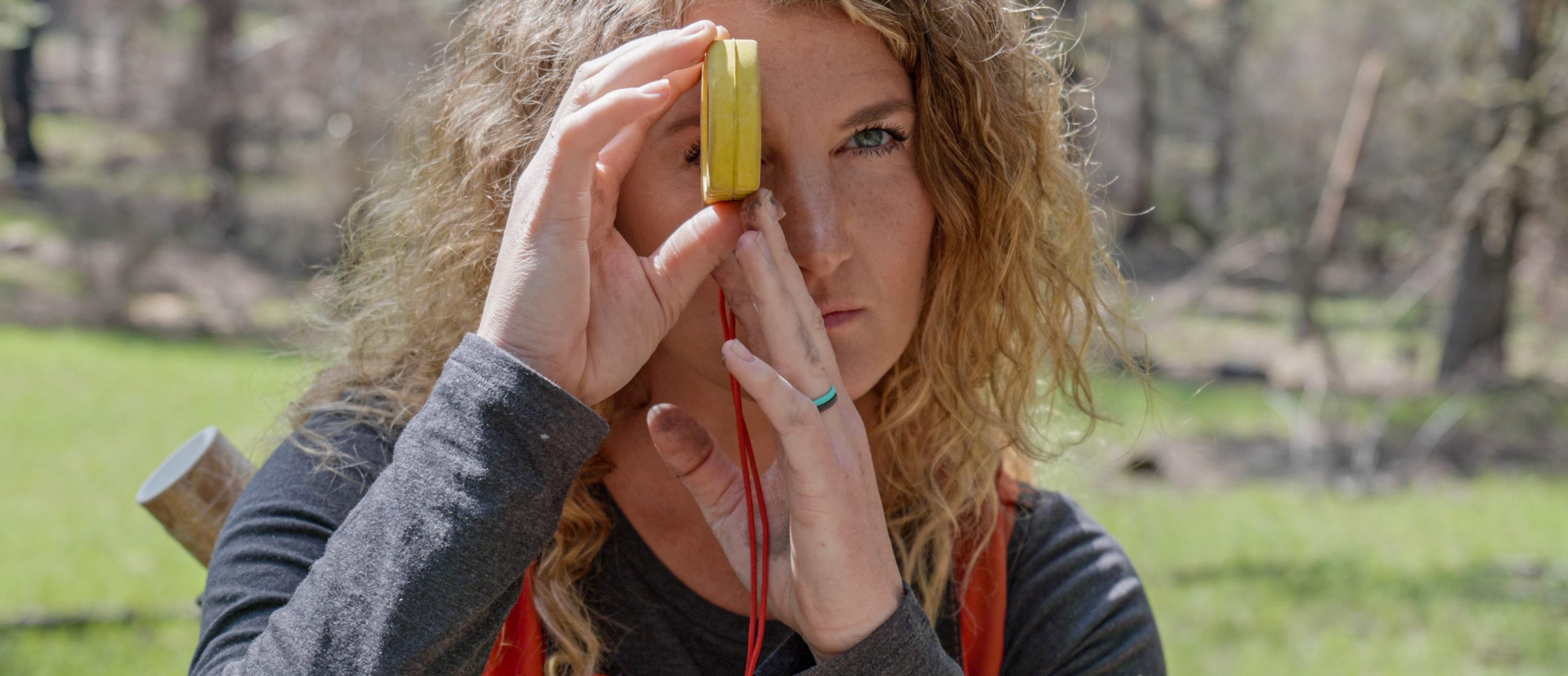Profiles in Forestry: Idaho NWTF Forester Sarah Johnson
Thanks to the National Forestry Initiative and the NWTF-NRCS partnership, foresters like Idaho’s Sarah Johnson are working together with landowners to help create a more suitable forested landscape for wild turkeys and many other wildlife species
Sarah Johnson is hands on when it comes to her job as an NWTF forester in the Gem State of Idaho. Johnson was raised next door in eastern Washington and received her forestry degree at Washington State University. Since 2009, she has been a constant in the forest industry, including stints with the USDA Forest Service and private forest consulting. In 2019, Johnson accepted her current job as a National Forestry Initiative forester with the NWTF.
The position is a partnership with the Natural Resource Conservation Service where Johnson provides forestry counsel on private and tribal lands. Her region extends from the Canadian border to Grangeville, Idaho. Working directly with specific landowners, Johnson assesses forest habitat and develops practices, known as silviculture, to take care of short- and long-term forest objectives.
Partnerships, like the NWTF and NRCS agreement, are critical for wild turkey habitat improvement, but the efforts aid all wildlife. Working through the Environmental Quality Incentives Program, a result of the current farm bill, the partnership has an objective to improve forest ecosystems on up to 350,000 acres in 24 states via 24 unique foresters such as Johnson. The existing program lasts through September 2023. In addition to federal agencies, Johnson works closely with Pheasants Forever and Trout Unlimited, plus collaborates continuously with Idaho Fish and Game.
“Active forest management will always benefit wildlife of one species or another,” Johnson said. “One example is an intermediate stand treatment, one of our top forestry practices that we recommend in Idaho. Implementing this practice gives turkeys and other wildlife a place for cover, and opens up the forest canopy, letting sunlight hit the forest floor promoting new vegetation to sprout up for foraging.”
This procedure is combined with thinning to decrease fuel levels. Resulting vegetation provides added nutrition to an area, but also minimizes the occurrences of a major wildfire. If a fire does occur, the management technique increases the odds fire will burn at a more natural rate. This equals less damage and spurs even more lush, nutrient-filled vegetation to return.
Proper forest management is important for numerous reasons. When done correctly, Johnson said the work benefits wildlife and purifies the air we breathe, filters the water we drink, prevents soil erosion and, as previously noted, lessens the chances for immense, land-scarring wildfires.

Like most natural resource careers, Johnson splits her time equally between the office and the outdoors. During winter and spring, she spends half of her time drafting forest management plans and developing specific forest practices for each unique property. As the weather warms, she devotes more time meeting with landowners and implementing the procedures she has planned. She is also thorough with follow-up and revisiting previous projects to ensure guidelines continue to be met for the best habitat outcome. In between the launch of new projects and assessments on past projects, she meets with as many new landowners as possible to begin initiating the next round of applications. The forestry lifestyle keeps her interconnected with landowners and the local communities. She understands it all helps aid wildlife, but it also adds energy to the more than 11,000 jobs connected to the Idaho timber industry.
Private landowners play a key role in the process, and the emphasis on private landowner assistance results from the Forest Service’s existing programs in place for forests. Even more so, many wildlife species winter on private lands in lower elevation settings due to food and water abundance. Habitat improvements on these properties benefit hunters as well, because wildlife, like wild turkeys, disperse again in the warmer months. Occasionally a landowner will even be prompted to provide access to the public for outdoor pursuits.
“I had a landowner near the Lolo Pass area do around 100 acres of forestry treatments through one of the NRCS programs, and then he donated some of the property for public access for recreational use, whether it’s for fishing, hunting, hiking, etc.,” Johnson said. “We don’t come across these types of landowners often, but this guy was doing some pretty amazing work on top of donating his property for public recreational use.”
Johnson hopes for more properties to provide access after administering habitat improvements, but she still sees the importance of helping wildlife through focused forestry management. To date, she has crafted forest management plans or treatment prescriptions that have improved 1,379 acres of private land.
Her future goals are simple: to continue impactful forestry work for wildlife on private lands.
“I do not have a specific acre goal, but more of a drive to continue delivering forestry through the NWTF and NRCS,” she said. “The demand in this region is significant so I have no doubt I will continue to reach [similar annual acreage figures], if not more each year.”
As with everything in life, funding drives Johnson’s ability to positively affect more wildlife habitat. As more forestry applications slide across her desk, it also means some landowners may have to wait until more funding is available for work.
It is a never-ending cycle of budgeting, developing plans and implementing for results. Even with the challenges, Johnson still enjoys the hands-on approach to helping wildlife through a habitat improvement approach.
